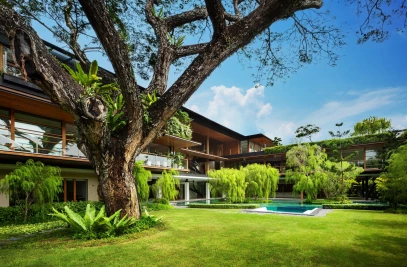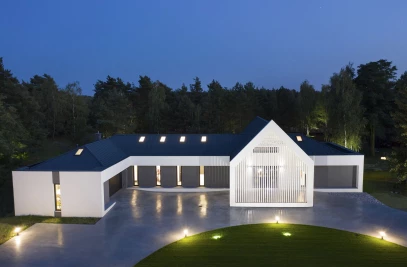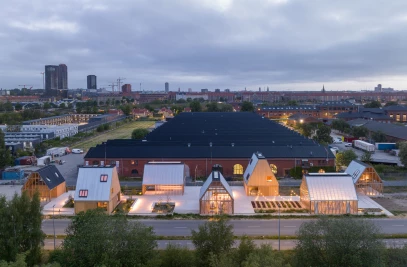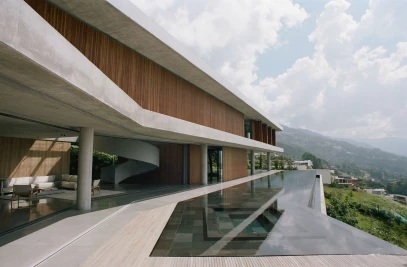Accommodating a start-up leather shop, with accompanying living space and bedrooms, this tiny urban house is a retrofit project occupying an 18 square-meter site in Ho Chi Minh City, Vietnam. The architects, ROOM+ Design & Build, found a creative retrofitting solution by carefully removing two old brick facades and replacing them with glass-block facades and integrated windows with new minimal steel structure.

Located on the northeast and southeast façades, the translucent glass-blocks allow for natural light and ventilation without sacrificing interior privacy. The house blends into its surroundings during the day while at night, when the lights are on, the glass-block takes on a lantern-like effect. Highly modular, the dimensions of the clear glazed square windows were determined to suit the 190w x 190h dimension of a glass-block.

A pergola on the top-level forms another feature element of the design. Based on the square shape of the glass-block, the pergola acts as an outer skin, providing space for planting while also minimizing heat gain and providing privacy.

Inside, service and circulation spaces include the bathroom and staircases, which are positioned to the west to prevent solar heat gain in the main space. The ground floor is dedicated to the owners’ leather showroom with some display windows and integrated glass shelving. The kitchen, laundry, staircase, and a small toilet are intentionally concealed behind sliding glass doors.

At the first level, a compact bedroom suite with bathroom and wardrobe are accommodated within a 14-meter square space and seamlessly hidden behind glass partitions. A simple palette of two colours is used: the green of the traditional concrete floor tiling and the banana-leaf pattern film applied on glass doors; and the natural warm tone of wooden furniture and soft furnishings.

On the second level, a cozy master bedroom suite includes an ensuite with a delightful glass-block shower. Sunlight filters through the plantings that surround as well as the glass-block façade. The various windows are positioned to open up to the greenery while avoiding direct sightlines with neighboring houses.

Throughout the house, furniture is designed with natural wood and traditional bamboo sheets, while floors and finished with floral-patterned concrete tile. The combination of contemporary with traditional materials and minimalist detailing results in a space that is both intimate and familiar, while also boldly fresh and new.



































